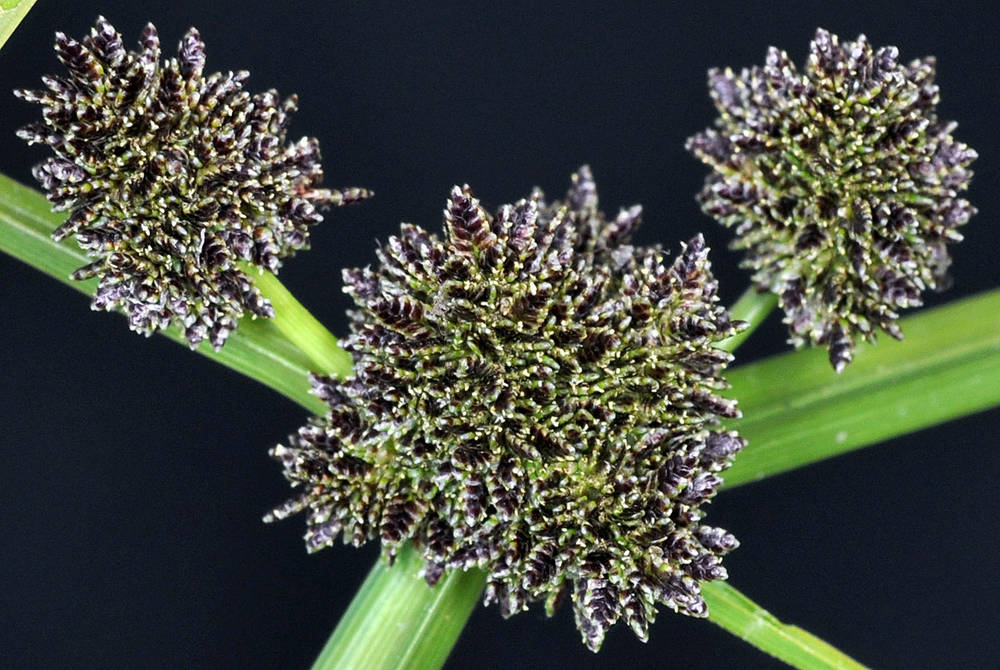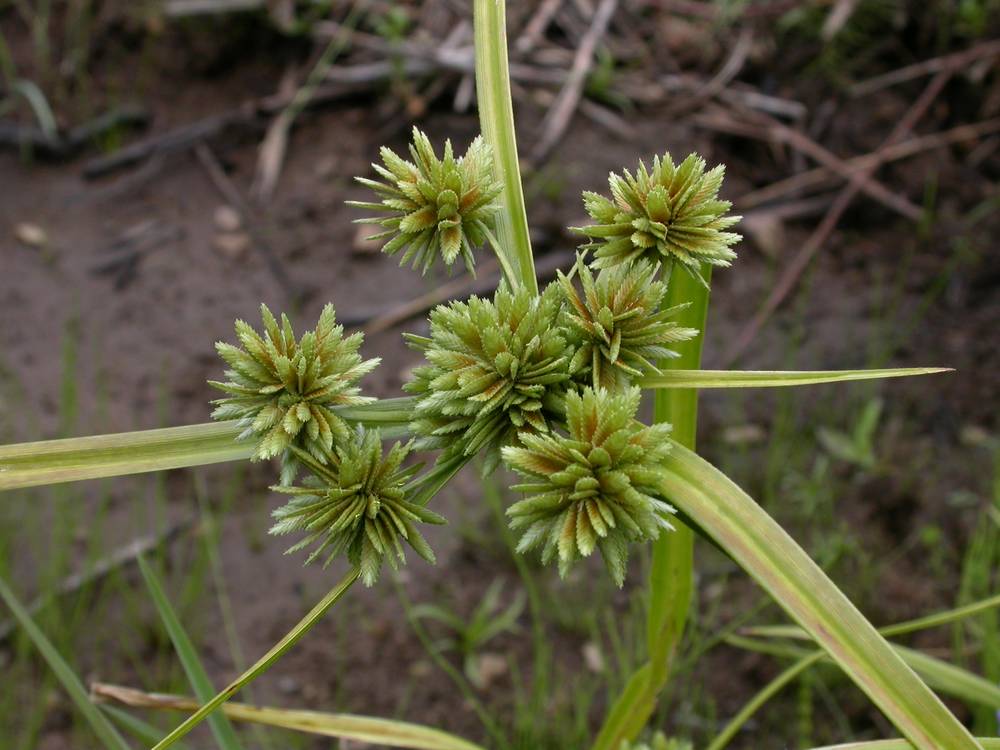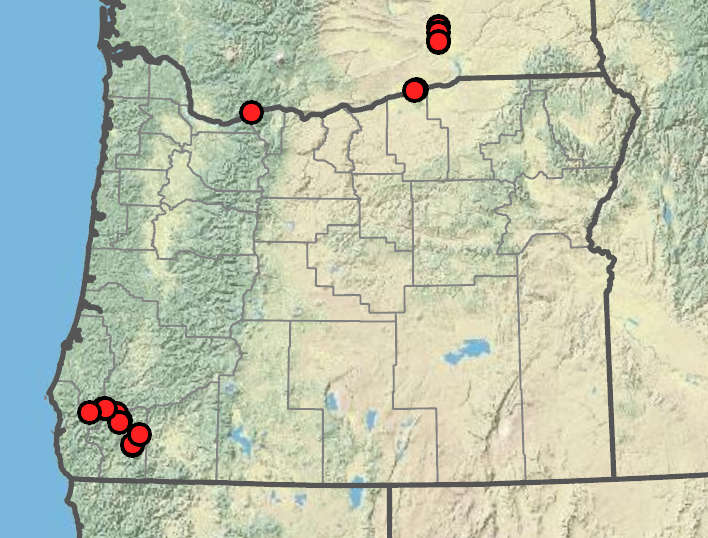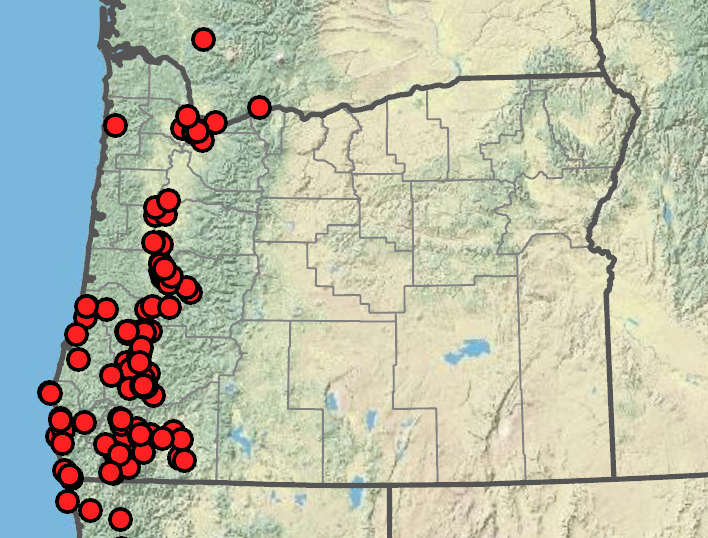Cyperus difformis
Cyperus eragrostis
Asian flatsedge
tall flatsedge
1–15, trigonous, 7–30 cm × 1.2–2.5 mm; soft (flattened in pressing).
trigonous to terete; (25)40–60(90) cm.
(2)7–22 cm × 2.2–4 mm.
(10)25–50 cm × 5–8(12) mm.
clusters head-like; dense, 7–17(35) mm wide;
rays (0)1–5, 2–32 mm; longest inflorescence bract erect or nearly so, appearing as continuation of culm; other bracts horizontal to ascending.
clusters head-like, globose; (10)20–40 mm diameter;
rays (0)3–10, 2.5– 5(12) cm;
inflorescence bracts 4–8; horizontal to ascending at 15–30°, 3–30(50) cm × 1.5–8(12) mm.
30–120, oblong-ellipsoid, compressed; (2)3–5(6) × 0.8–1.2 mm; greenish brown to purplish brown; floral scales (6)12–20(30), obovate to orbiculate, 0.6–0.8 × 0.6–0.8 mm, stramineous to deep purple with clear margins; mid-stripe greenish, stramineous, or purplish;
lateral ribs 0; medial ribs 3;
apex mucronulate.
(20)30–50(70), oblong, compressed, 5–20 × 2.2–3 mm; floral scales (12)20–30(50); ovate-deltate, 2–2.3 × 1–1.4 mm; off-white to golden brown, basally 2-keeled;
lateral ribs 0, declined 30–40° from rachilla.
anthers 0.1 mm;
styles 0.1 mm;
stigmas 0.1–0.3 mm.
anthers 1–1.2 mm;
styles 1–1.2 mm;
stigmas 0.5 mm.
obovoid-ellipsoid, 0.6–0.8 × 0.3–0.4 mm (as long as subtending scale);
base cuneate.
broadly ellipsoid, 1.2–1.4 × 0.5–0.6 mm;
stipe to 0.1 mm;
beak 0.2–0.3 mm.
Cyperus difformis
Cyperus eragrostis
Disturbed, sandy or muddy soils, sand bars, roadsides, sometimes on serpentine. 100–400 m. Sisk. CA, ID; east to NJ, south to Mexico; South America; Africa, Australia, Eurasia, islands of the Pacific and Indian Oceans; Exotic.
Cyperus difformis is recognized by its tight heads of small spikes with unusually small scales. The first Oregon collection was made in 2004.
Disturbed wetlands, roadside ditches. 0–800 m. Casc, CR, Est, Sisk, WV. CA, WA; north to British Columbia, eastern US; South America; Europe. Native?
Cyperus eragrostis is a southern species that has been spreading northwards. Southwestern Oregon populations may be native. Further research is warranted.
Barbara Wilson, Richard Brainerd, Nick Otting
Barbara Wilson, Richard Brainerd, Nick Otting
- Local floras:
BC,
CA,
OR,
WA
- Local Web sites:
CalFlora,
CalPhotos,
Flora NW,
PNW Herbaria
WildflowerSearch
iNaturalist (observations)
USDA Plants Database
- LBJ Wildflower Center
- SEINet
- Plants of the World Online
- Encyclopedia of Life
- Wikipedia
- Google Image Search





